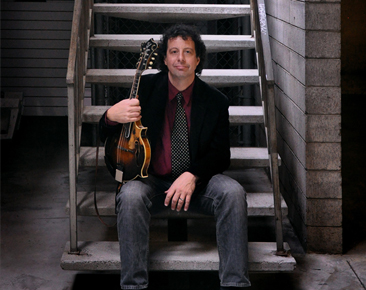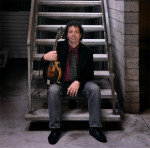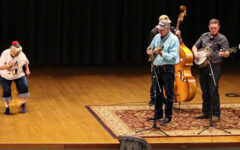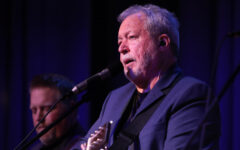
 Mando monster Mike Marshall is set to perform this weekend with the Pacific Chamber Symphony. The program has him featured on two pieces: his own composition, Concerto No. 1 for Mandolin and String Orchestra, and Harpsichord Concerto #5 in Fm (BMV 1056) by JS Bach.
Mando monster Mike Marshall is set to perform this weekend with the Pacific Chamber Symphony. The program has him featured on two pieces: his own composition, Concerto No. 1 for Mandolin and String Orchestra, and Harpsichord Concerto #5 in Fm (BMV 1056) by JS Bach.
Two shows are scheduled, both under the direction of Lawrence Kohl. The first, on Saturday (3/2) will be held at the Mt. Tamalpais United Methodist Church in Mill Valley, CA, and the second on Sunday (3/3) at the Lafayette Library and Learning Center in Lafayette, CA.
Not many contemporary mandolinists have found themselves in as many stylistic settings as Mike. He first hit the scene as second mandolin with the David Grisman Quintet, which he joined as a young man in the 1980s. There he met Darol Anger, with whom he has recorded multiple projects. He has explored and recorded in jazz, bluegrass, new acoustic, classical and traditional folk music forms.
Marshall’s concerto was written in 2006 as a commission from the Plucked Strings Foundation and the Classical Mandolin Society of America. It was first performed in 2007 at the North Carolina School for the Arts in 2007.
Mike tells us that the piece was initially conceived for a mandolin orchestra, with him as soloist, but after performing it that way a few times, he has come to feel that it works better with bowed strings behind the mandolin for the contrast in textures.
He shared a few thoughts about both the process of writing a structured piece, and the concerto itself.
“It took me quite a long time to write, since every note has to be put on paper when you are dealing with these kinds of groups. I spent a lot of time on airplanes chugging away at it. I think it represents a different side of my writing due to the fact that I did not use an instrument for much of the writing, but instead worked just with the music paper and the computer.
When we get away from our instruments we hear things a little differently. Maybe we are constrained in some way by our instrument’s contact. This was a new experience for me, and I look forward to more like it.
The first movement starts as a slow kind of heroic rock thing, and then evolves into a baroque counterpoint dance with some pretty quick mandolin passages thrown in here and there.
On the second movement, I begin on mandocello and then switch to mandolin. It has a pop ballad vibe with some interesting chords and really grew out of the mandocello. It then moves into a romantic Italian-like section for the mandolin where I play double stop melodies.
The last movement is very bluegrass inspired and really gets moving. It is probably the biggest challenge for most orchestral players, since they may not have had much experience playing those kinds of grooves and making a fiddle tune really spin right. I do my best to translate the language to them in what is usually a pretty limited amount of rehearsal time, but I have found most players really receptive to the challenge, and if they can hear my mandolin in some kind of monitoring situation they can usually lock on really well and go for the ride. Sometimes I might even pick up a fiddle and demonstrate.
The challenge is that most of the little things that we do in our music are not really things that we ever write down. So if you just play what’s on the page you are probably missing half of the good stuff. But as soon as a player sees something being done physically, if they are smart and open to it, they can usually do it pretty quickly or at least get in the ball park.”
Mike describes the Pacific Chamber Symphony as consisting some in the best players in the Bay Area, and he feels confident that they will do the piece justice, or as he put it, “they are going to ROCK it!”
No recordings exist yet of his Concerto No. 1 for Mandolin and String Orchestra, but he is hoping to get a video from this weekend’s performances.
The Bach piece was initially written for harpsichord in F minor, but has been re-scored in G minor for mandolin. Mike says he first heard it played by German classical mandolinist Caterina Lichtenberg, with whom he has been working in preparation.
“The first movement has lots of triplets in it, but the second is a gorgeous slow movement which is famous with oboe players because it was used as movement in one of his other concertos, as well as part of a Cantata. The third movement is a joy ride in 3/8 with lots of fun twists and turns.
With Bach you just cannot go wrong right? Everything he wrote is just perfect and balanced and never gets boring, but also stands tall and still like a monk in a rain storm while swirling his players about like they were miniature toy soldiers. It’s as if he invented most of what we think of as MUSIC!”
I can certainly agree with that sentiment.
You can get full details about the shows this weekend from the Pacific Chamber Symphony web site.







